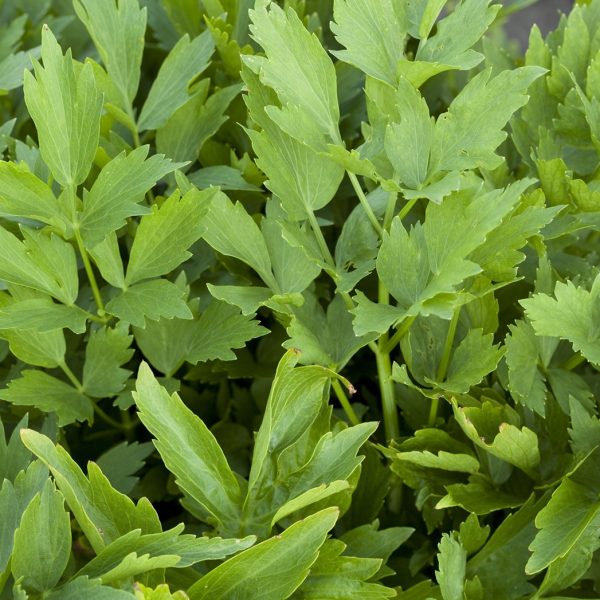-
How does it feel?
Shatavari is part of the Asparagus family and is native to tropical and subtropical India but can be found in parts of Africa. It grows in the wild and is also cultivated. The plant is a thorny perennial with striated leaves and is a climber that can grow up to 2m in height with extensive branching. The leaves are delicate and soft but needle-like in shape. Its roots are full, juicy and tuberous and can reach lengths of 1m. Shatavari flowers are white, incredibly small, fragrant and profuse. It is happy growing in humid jungles, shatavari can also thrive in extremely arid conditions. Its capacity to capture and store moisture in dry soils is quite astonishing. It is the tuberous roots that are valued for their medicinal properties.
-
What can I use it for?
Shatavari is a renowned tonic for the female reproductive system and contains natural precursors to female hormones that help to balance hormones, enhance fertility, promote conception and reduce menopausal and menstrual symptoms. Shatavarin and Sarsapogenin are the two key constituents in Shatavari. They act as pre-cursors to sex-hormones and are responsible for Shatavari’s oestrogenic activity, but are not phyto-oestrogens. Shatavari contains steroidal glycosides such as diosgenin which influence a strong anti-inflammatory effect, particularly within the reproductive and the digestive systems. This plant is also classed as an adaptogen and contains a proportion of immune stimulating polysaccharides making it particularly nutritive and tonifying to a weakened immune system exacerbated by stress.
-
Into the heart of shatavari
 The primary use of this plant is as a tonic to the female reproductive system. It can tonify the uterus, giving it strength and nourishment. This in combination with shatavari’s ability to actively enhance the libido, make it an excellent fertility tonic that ensures a healthy and full term pregnancy.
The primary use of this plant is as a tonic to the female reproductive system. It can tonify the uterus, giving it strength and nourishment. This in combination with shatavari’s ability to actively enhance the libido, make it an excellent fertility tonic that ensures a healthy and full term pregnancy.Shatavari is able to balance oestrogen levels in the female reproductive system supporting hormone dominant conditions but also supporting a woman through changes in their menstrual cycle, pre-menstrual tension and the hormonal changes that occur during the menopause.
Shatavari actively stimulates the production of prolactin in breast feeding women, increasing milk flow.
Shatavari contains strong anti-inflammatory constituents that have an affinity for the urinary, reproductive and digestive systems. The plant is also characteristically mucilaginous making it an excellent remedy for hot, dry and irritated mucous membranes. Shatavari is considered as an effective diuretic, making it particularly suitable for clearing congested heat from the kidneys and urinary system. Shatavari will, therefore, help treat inflamed conditions such as cystitis, vaginal dryness but also gastric reflux.
Shatavari is an adaptogen and has an action upon the pituitary gland and the HPA (hypothalamic pituitary adrenal axis). It has a regulating effect throughout the body and is particularly nourishing to a weakened and depleted immune system.
Gynaecology
Shatavari is the foremost female uterine tonic. It is primarily used as a menstrual regulator in dysmenorrhoea, menorrhagia and menstrual irregularity. As the pitta dosha moves in both the blood and the artavasrotas, the cycle is often disturbed by excess heat; this heat can condense the blood (due to dehydration), cause it to move too quickly (due to its catalytic activity), cause it to overflow (due to its ‘rebellious’ nature) and cause inflammations (due to its irritating tendency). Its affinity for shukra dhatu tonifies female fertility; the unctuous properties increase the reproductive fluids, enhancing both conception and uterine strength. It can also be used to help prevent miscarriage. Shatavari is very useful in menopausal symptoms with hot flushes, irritability, irregular memory and dryness.
Lactation
The nourishing effect of shatavari on rasa dhatu makes it specific for increasing milk flow and quantity during breastfeeding.
GIT
The unctuous, bitter and sweet qualities of shatavari soothe inflammation of the mucus membranes with high pitta in conditions such as colitis, Crohn’s disease, dysentery with bleeding, inflammation and pain. It is specifically active against Entamoeba histolytica. Shatavari is good for conditions of gastric hyperacidity (amlapitta) with sour reflux and burning in the stomach as it is a cooling anti-inflammatory. Its demulcent properties also make it specifically useful for healing bleeding ulcers and gastritis.
Lungs
Where there is inflammation from dryness and heat, Shatavari increases moisture. It is commonly used in dry coughs, sore throats and haemoptysis.
Male fertility
Shatavari can help improve a low sperm count and irregularity.
Urinary and kidney
Shatavari is useful in dysuria with hot and smelly urine and haematuria.
Anabolic
Shatavari’s rasayana properties increase mamsa dhatu building body mass, muscle tissue and nourishing the blood. It nourishes the ojas and can enhance immunity in the treatment of cancer.
Nerves
Shatavari nourishes majja dhatu and calms the nerves. It specifically nourishes the brain and reduces vata disorders; spasms, pain and insomnia.
-
Traditional actions
Herbal actions describe therapeutic changes that occur in the body in response to taking a herb. These actions are used to express how a herb physiologically influences cells, tissues, organs or systems. Clinical observations are traditionally what have defined these actions: an increase in urine output, diuretic; improved wound healing, vulnerary; or a reduction in fever, antipyretic. These descriptors too have become a means to group herbs by their effects on the body — herbs with a nervine action have become the nervines, herbs with a bitter action are the bitters. Recognising herbs as members of these groups provides a preliminary familiarity with their mechanisms from which to then develop an understanding of their affinities and nuance and discern their clinical significance.
-
Traditional energetic actions
Herbal energetics are the descriptions Herbalists have given to plants, mushrooms, lichens, foods, and some minerals based on the direct experience of how they taste, feel, and work in the body. All traditional health systems use these principles to explain how the environment we live in and absorb, impacts our health. Find out more about traditional energetic actions in our article “An introduction to herbal energetics“.
Western energetics
-
Did you know?
In India, the fresh roots of this plant were traditionally fed to buffalo in order to increase milk yield for their calves.
Additional information
-
Safety
No drug herb interactions are known.
-
Dosage
3–30g/day dried or 3–15ml of a 1:3 in 25% tincture

-
Recipe
Aphrodite’s aphrodisiac tea

This tea reaches deep into the reproductive system, nourishing our procreative and sexual energy. Use it when preparing for a family or for nurturing your love life. For men and women, this elixir feeds sex hormone release, improves egg/sperm quality and enhances orgasmic experiences.
Ingredients:
- Shatavari root 4g
- Ashwagandha root 2g
- Licorice root 2g
- Cinnamon bark 2g
- Milk (any type) 250ml (9fl oz)
- Damiana leaf 2g
- Cacao powder 1 tsp per cup
- Maca root 1 tsp per cup
- Flower pollen ½ tsp per cup
- Vanilla essence a dash per cup
- Honey (or Amaretto) a drop per cup
Makes 2 cups of the most amorous elixir.
Method:
- Put the shatavari, ashwagandha, licorice and cinnamon in a saucepan with the milk and 250ml/9fl oz cold filtered water.
- Cover, bring to the boil and allow to simmer for 15 minutes. Take off the heat and add the damiana leaf.
- Leave to steep for 10 minutes, then strain.
- To each cup, add the cacao, maca, flower pollen, vanilla essence and honey. Then top with the tea and stir.
Recipe from Cleanse, Nurture, Restore by Sebastian Pole



























 The primary use of this plant is as a tonic to the female reproductive system. It can tonify the uterus, giving it strength and nourishment. This in combination with shatavari’s ability to actively enhance the libido, make it an excellent fertility tonic that ensures a healthy and full term pregnancy.
The primary use of this plant is as a tonic to the female reproductive system. It can tonify the uterus, giving it strength and nourishment. This in combination with shatavari’s ability to actively enhance the libido, make it an excellent fertility tonic that ensures a healthy and full term pregnancy.





